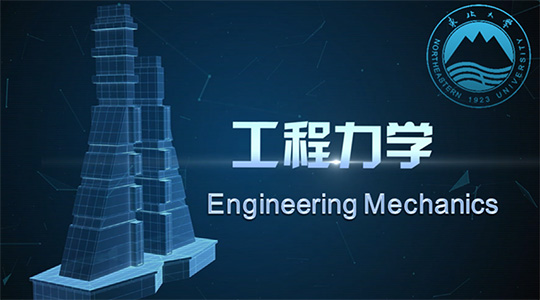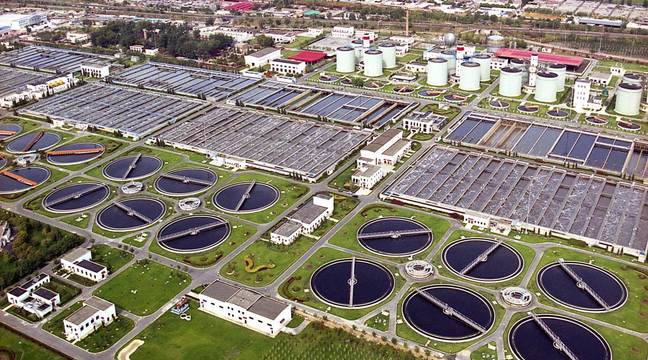
当前课程知识点:Water and Wastewater Treatment Engineering: Biochemical Technology > Chapter 1 Basic principles of wastewater biological treatment > Section 1.2 Principles and determination of wastewater biodegradability > 1.2 Principles and determination of wastewater biodegradability
返回《Water and Wastewater Treatment Engineering: Biochemical Technology》慕课在线视频课程列表
返回《Water and Wastewater Treatment Engineering: Biochemical Technology》慕课在线视频列表
同学们好!上一节,我们学习了废水好氧生物处理的基本原理
这一节,我们来继续介绍废水可生化性及可生化程度的判别
这一节,共分4个内容
第一节是废水可生化性的定义
第二节是废水可生化性的分级
第三是废水可生化性的实验方法
第四是影响废水可生化性的一些因素
首先我们来看废水可生化性的定义
某种废水或者有机物是否可以采用生物处理法进行处理?
如果可以的话呢,它的难易程度如何?
这是我们所说的废水的可生化性
因此,实际上是说两个概念
一种是针对某种废水来说,它的可生化性如何
一种呢,是针对某一种特别的物质
特别是其中某一种有机物,它的可生化性如何
有机物或者是废水的可生化性,分类的话,可以分成这样三类
一类是易生物降解,一类是可生物降解,一类是难生物降解
所谓的易生物降解,是指这种废水或者这种有机物非常容易被微生物作为碳源或者是能源物质加以利用
所谓的可生物降解是指这种废水
或者这种物质能够逐步的或者是部分的被微生物所利用
难生物降解是指降解的速率很慢或者说是根本不降解
废水可生化性的鉴别方法有多种
第一种通常用的是根据废水
或者这种有机物的生物氧化过程中间
所消耗的或者所需要的耗氧量来进行鉴别
其中又分成两种主要的方法
第一种是非常简单的水质指标法
实际上主要是用BOD5和COD来进行判别
当一个废水的BOD5和COD比值大于0.5的话
我们认为这种废水是易于生物降解的
当废水的BOD5和COD的(比)值在0.3-0.5之间的话
我们认为这种废水是可生化降解的,它的可生化性属于可生物降解
当BOD5和COD的比值小于0.3的话,这个废水难于生物降解
这里我们可以简单的举例,像我们生活污水的BOD5和COD的比值就在0.5以上
属于一种易生物降解
像一些石化类的或者是化工类的废水
它的BOD5和COD的比值通常都在0.3以下,有的甚至小于0.1
通常这种废水通常我们认为是难以生物降解
还有一些其他类的工业废水,它的BOD5比COD的值在0.3-0.5之间
第二种方法,我们是通过测试一种废水
或者是某一种有机物它在好氧条件下呼吸速率
也把这个方法称为呼吸速率法
我们通常,原来用瓦勃式呼吸仪
它的基本原理是通过有机物或者废水的生化呼吸线以及内源呼吸线相比较
如果它生化呼吸线高于内源呼吸线
说明这种废水或者这种物质是可生物降解的
如果它的呼吸速率线接近内源呼吸,甚至低于内源呼吸
说明它是不可降解的,甚至是对微生物是有毒害的
我们这张图呢,也给大家看到了
我们可以通过一个实验。首先测出内源呼吸线
然后用呼吸线跟内源呼吸线相比较,来判别废水或者这种物质的可生化性
这里给大家看到的就是瓦勃氏呼吸仪的一个示意图
这是瓦勃氏呼吸仪的主体,这个是测试呼吸速率的测量管
测量仪组装到一起以后是这样一个整体
通过这样一个实验我们就可以测到每一种物质的生化呼吸线,包括内源呼吸线
另外的话,现在我们还有新的一些各种呼吸测试的仪器和设备
像这里给大家看到的是一种德国WTW公司的呼吸瓶
这个瓶,它就没有测压管的呼吸系统
反应瓶,用的是这样一个100ml,甚至150ml的这样一个反应瓶
通过两侧支管可以向里面加入或者是抽取一些药剂,或者是取得一些样品
它的头部是装有一个智能芯片,可以记录里面气室的压力的变化
通过压力的变化可以反算出它的呼吸速率
同样的,通过内源呼吸和呼吸线的比较可以来判断废水的可生化性
除了根据耗氧量的比(较),还可以根据有机物的去除效果来进行比较
这里有多种方法。比如说,我们有静置烧瓶筛选试验方法
实际上是一个间歇试验
也有的用振荡培养试验的实验方法,还有半连续活性(污泥)法
甚至呢我们在实验室就完全模拟一个活性污泥法,来做一种模型试验
通过长期的实验来观察这种废水或者是这种有机物
到底能不能够通过生物反应进行降解
另外的话,除了根据好氧过程中间的需氧量或者耗氧量
来判别它的可生化性以外呢
我们也可以根据二氧化碳的产生量来进行判别
这里有一种叫斯特姆测试法
或者我们还可以根据微生物的生理生化指标
通过它对一些特殊酶的测试
像ATP的测试、或者是脱氢酶的测试甚至是细菌的平板计数
来判别这种废水或者是有机物在特定条件下是否能够被生物降解
影响有机物生物降解性能的因素主要有三个方面
第一个,是化学物质本身的性质
好比说它的化学组成或者说是它的理化性质,包括它的浓度
包括它跟其他易降解或者是难降解基质的共存情况
第二个是接种的微生物的种类和性质
微生物的来源、它的数量以及菌种的关系
第三个是环境条件。好比说pH值、溶解氧、温度以及营养物质
当这些条件,如果不太适合于生物的生长的时候,虽然废水的可生化性也许本身是好的
但是处理环境条件的影响也会导致它的生物活性,它的生物降解性能发生变化
-Section 0.1 Development Status of Wastewater Treatment Process
--Section 0.1 Development Status of Wastewater Treatment Process
-Section 0.2 Typical Processes of Wastewater Biological Treatment
--Section 0.2 Typical Processes of Wastewater Biological Treatment
-Section 1.1 Principles of wastewater aerobic biological treatment
--1.1 Principles of wastewater aerobic biological treatment
-Section 1.2 Principles and determination of wastewater biodegradability
--1.2 Principles and determination of wastewater biodegradability
-Section 1.3 Principles of wastewater anaerobic biological treatment
--Section 1.3.1 Principles of wastewater anaerobic biological treatment(1)
--Section 1.3.2 Principles of wastewater anaerobic biological treatment(2)
-Section 1.4 Principles of wastewater biological nitrogen removal
--Section 1.4 Principles of wastewater biological nitrogen removal
-Section 1.5 Principles of wastewater biological phosphorus removal
--Section 1.5 Principles of wastewater biological phosphorus removal
-Chapter 1 Homework
-Section 2.1 Basic concept of activated sludge process
--Section 2.1.1 Basic concept of activated sludge process
--Section 2.1.2 Basic concept of activated sludge process
-Section 2.2 Growth rule of activated sludge and its application
--Section 2.2 Growth rule of activated sludge and its application
-Section 2.3 Running mode of activated sludge process
--Section 2.3.1 Running mode of activated sludge process(1)
--Section 2.3.2 Running mode of activated sludge process(2)
-Section 2.4 Kinetics of active sludge process
--Section 2.4.1 Kinetics of active sludge process(1)
--Section 2.4.2 Kinetics of active sludge process(2)
--Section 2.4.3 Kinetics of active sludge process(3)
--Research and Development of Kinetic Model of Activated Sludge Process
-Section 2.5 Principle, calculation and equipment of aeration
--Section 2.5.1 Principle, calculation and equipment of aeration(1)
--Section 2.5.2 Principle, calculation and equipment of aeration(2)
-Section 2.6 Designing of activated sludge process
--Section 2.6 Designing of activated sludge process
-Section 2.7 Operation and management of active sludge process
--Section 2.7.1 Operation and management of active sludge process (1)
--Section 2.7.2 Operation and management of active sludge process (2)
-Chapter 2 Homework
-Section 3.1 Basic principle of biofilm
--Section 3.1 Basic principle of biofilm
-Section 3.2 Biofilter process
--Section 3.2.1 Biofilter Process (1)
--Section 3.2.2 Biofilter process (2)
--Section 3.2.3 Biofilter process (3)
-Section 3.3 Biodisk process
-Section 3.4 Biological contact oxidation process
--Section 3.4 Biological contact oxidation process
-Section 3.5 Aerobic biological fluidized bed process
--Section 3.5 Aerobic biological fluidized bed process
-Chapter 3 Homework
-Section 4.1 Oxidation ditch process
--Section 4.1 Oxidation ditch process
-Section 4.2 A-B process
-Section 4.3 SBR process
-Section 4.4 MBR process
-Chapter 4 Homework
-Section 5.1 Overview and characteristics of development of anaerobic biological treatment
--Section 5.1 Overview and characteristics of development of anaerobic biological treatment
-Section 5.2 Anaerobic digester
--Section 5.2 Anaerobic digester
-Section 5.3 Anaerobic contact process and anaerobic filter process
--Section 5.3 Anaerobic contact process and anaerobic filter process
-Section 5.4 UASB process
-Section 5.5 Other anaerobic biological treatment process
--Section 5.5 Other anaerobic biological treatment process
-Section 5.6 Operation management of anaerobic biological treatment process
--Section 5.6 Operation management of anaerobic biological treatment process
-Chapter 5 Homework
-Section 6.1 Introduction
-Section 6.2 Biological nitrogen removal process and technology
--Section 6.2 Biological nitrogen removal process and technology
-Section 6.3 Biological phosphorus removal process and technology
--Section 6.3 Biological phosphorus removal process and technology
-Section 6.4 Simultaneous nitrogen and phosphorus removal process
--Section 6.4 Simultaneous nitrogen and phosphorus removal process
-Chapter 6 Homework
-Section 7 Natural biological treatment process
--Section 7 Natural biological treatment process
-Chapter 7 Homework
-Section 8.1 Source, nature and treatment of sludge
--Section 8.1 Source, nature and treatment of sludge
-Section 8.2 Sludge thickening and digestive stability
--Section 8.2 Sludge thickening and digestive stability
-Section 8.3 Sludge conditioning, dehydration and incineration
--Section 8.3 Sludge conditioning, dehydration and incineration
-Chapter 8 Homework
-Section 9 Wastewater Discharge and Reuse
--Section 9 Wastewater Discharge and Reuse
-Chapter 9 Homework




